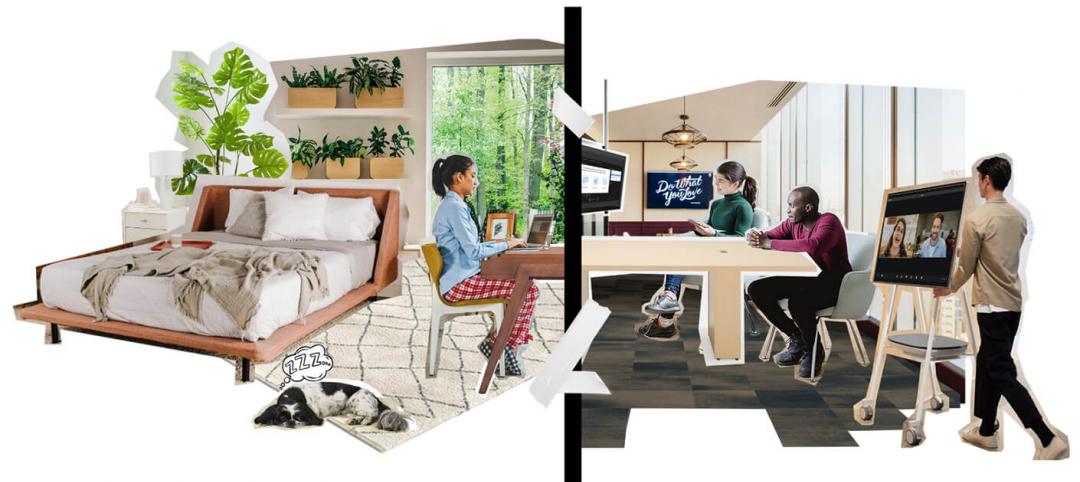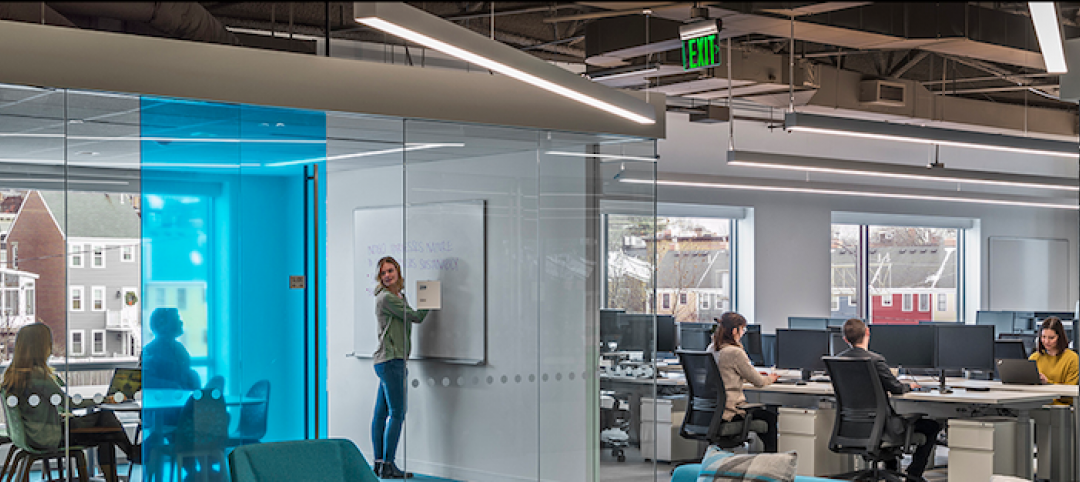If you want to know where the future of work is heading, ask Amazon – or better yet, follow them.
Last week, we learned the Seattle-based tech giant will split its much-anticipated HQ2 between Crystal City, VA and Long Island City in Queens, NY. Setting aside the debates about the two winners or their 10-figure incentive packages, it’s worth focusing instead on how Amazon’s decision may reshape the corporate workplace. And like the proposed facilities, the scope is enormous.
Most workplace discussions today revolve around adopting new interior design standards: open versus enclosed workstations; optimal teaming spaces; and emerging, smart office technologies. If they haven’t already, Amazon will address all these issues soon enough. But for now, the big HQ2 takeaway is how geography and mobility are becoming major workplace drivers. By choosing sites in the New York and DC metros, Amazon is reinforcing a trend where increasingly, talented people hunker down in a handful of highly desirable places, mostly coastal US cities. Now companies – and their jobs – come to them.
I call this trend, “upward immobility.”
To date, major corporations tend to consolidate their leaders in a single headquarters location. So while many companies have dozens of sites worldwide, their CEO and key executives still often collocate in one specific place – and in many cases, this place becomes synonymous with the company itself: Think Apple and Cupertino, or Ford and Detroit.
In this scenario, employees do the moving. Before the HQ2 search, if you aspired to be a corporate leader at Amazon, it likely entailed moving to Seattle and immersing yourself in its corporate culture. To attract the best talent, companies like Amazon spend billions to create workplace and amenity hubs to inspire potential employees to move or commute enormous distances to work. These facilities are often conceived as magnets for migratory talent and ideas, and dozens of iconic corporate sites throughout the US illustrate this point—including Amazon’s “HQ1” in South Lake Union. It’s interesting to consider how mobility has often been equated with success. When I was younger, if someone was rising through the corporate ranks, you said they were “going places.” Often literally.
That’s changing. Talented people today—particularly in the tech sectors—are becoming more loyal to particular places than to companies or jobs, and as the HQ2 search illustrates, they are gaining the upper hand in the mobility equation. As a handful of U.S. cities—especially New York, Boston, Washington, San Francisco and Seattle—continue to drive upward immobility, it’s to take stock of where all of this is heading and how it will likely shape the workplace of the future.
More HQ2s in More Places
Don’t be surprised if Amazon chooses to build more HQ2s in the several of its other finalist cities, notably Boston and Chicago. In some ways, this is already happening as Amazon is currently hiring tens of thousands of tech workers outside its three HQ hubs, reinforcing a pattern that other tech giants like Salesforce and Google started with their multiple hubs distributed throughout several U.S. cities. These other cities are also hubs of upward immobility; Boston, for example, can leverage tens of thousands of area students who see the benefit of staying put after graduation.
As work itself grows ever more technology-driven, the ability to spread and connect workers across vast areas will further challenge the value for central leadership facilities. If Amazon is successful in Crystal City and LIC, look for other non-tech companies to follow suit. In 20 years, we may see millions of urban hub-based workers cycling through hundreds of companies in a single place-based career.
Distributed Workforce Strategies
Even if many cities never land an Amazon HQ2 facility—and to be fair, many won’t—Amazon and other technology companies may soon begin building networks of remote employees in suburban and rural areas. Upward immobility applies here too; college towns, smaller cities with legacy talent pools and key individuals in remote places are all in the mix and offer a lot to thousands of talented workers with great ideas and skills who choose not to live in places like Seattle, New York and DC. It may not always seem like it, but far more people live outside these superstar cities than in them, and as soon as U.S. metro markets become saturated with tech jobs, employers will look to the next tier of cities and towns.
Now that Amazon is distributing its core leaders and operations, it will become easier to expand its workplace network to include other, smaller places – that’s how most networks start until functionality becomes ubiquitous. If Amazon’s new facilities are successful, look for them and dozens of other companies to expand this trend as well.
Amazon Prime Real Estate?
Amazon sells and rents things. Is it possible that after years of assembling terabytes of data on nearly every major U.S. city and anchor institution, they might eventually choose to offer commercial real estate to their millions of consumers? That might sound far-fetched, but consider the emerging coworking market which is thriving in Amazon’s key cities. Coworking is ripe for disruption, as it takes the byzantine world of commercial real estate transactions and makes them something more akin to renting movies or buying consumer goods. However this model also takes billions of dollars and enormous IT resources to scale, which limits the ultimate shared workplace market, even for WeWork.
Amazon offers both.
Imagine if Amazon chose to serve upwardly immobile workers by offering literally thousands of workplaces worldwide to talented folks essentially everywhere? Suddenly the hurdle of finding a place to work in most places would give rise to a new marketplace where people can work nearly anywhere, much in the same way that Uber and Airbnb are disrupting their industries. Corporations might one day hire people—and give them credits (Blockchain anyone?) to essentially work where they want in the places they want to be.
There’s a lot on the line. Global commercial real estate is estimated to be a $29 Trillion addressable market. If Jeff Bezos were to pivot and think of Amazon as a commercial real estate engine, he might indeed become the world’s first trillionaire.
All these possibilities are a lot to take in, but this week’s HQ2 announcement is just the beginning of a whole new phase where where you work is increasingly up for grabs and talent is increasingly defining the process.
Who knows, maybe in the future, when we see a talented person thriving, we’ll say “they’re staying places.”
This week, Amazon picked up on that.
More from Author
Perkins and Will | Sep 19, 2023
Transforming shopping malls into 21st century neighborhoods
As we reimagine the antiquated shopping mall, Marc Asnis, AICP, Associate, Perkins&Will, details four first steps to consider.
Perkins and Will | Jul 20, 2023
The co-worker as the new office amenity
Incentivizing, rather than mandating the return to the office, is the key to bringing back happy employees that want to work from the office. Spaces that are designed and curated for human-centric experiences will attract employees back into the workplace, and in turn, make office buildings thrive once again. Perkins&Will’s Wyatt Frantom offers a macro to micro view of the office market and the impact of employees on the future of work.
Perkins and Will | May 30, 2023
How design supports a more holistic approach to training
For today’s college athletes, training is no longer about cramming team practices and weight lifting sessions in between classes.
Perkins and Will | Dec 20, 2022
4 triage design innovations for shorter wait times
Perkins and Will shares a nurse's insights on triage design, and how to help emergency departments make the most of their resources.
Perkins and Will | Aug 30, 2021
The great re-shuffle & re-think
In this new hybrid environment in which we cater to how our employees work best, how will we manage new hybrid work practices and etiquette?
Perkins and Will | May 18, 2020
Global design firms collaborate on new COVID-19 mobile testing lab to bring testing to vulnerable communities worldwide
Perkins and Will, Schmidt Hammer Lassen Architects, and Arup Group develop scalable solutions for increased testing capacity within high-density and under-served neighborhoods.
Perkins and Will | Jun 7, 2019
Workplace wellness: Top 3 tips for Fitwel certification
How can thoughtful design encourage healthier choices, lifestyles, and work environments?
Perkins and Will | Feb 27, 2019
ResilientSEE: A framework to achieve resilience across scales
Conceived in the Boston studio of Perkins+Will, the ResilientSEE team developed a resilient planning framework that can be applied to other neighborhoods, cities, and countries.
Perkins and Will | Sep 4, 2018
It takes more than money to fund resilience
Resilient design, much like all projects in the built environment, requires funding.
Perkins and Will | Aug 13, 2018
There's more to the open office than headlines suggest
A study found that contrary to popular belief, the open office did not encourage—but rather, inhibited—face-to-face communication.
















